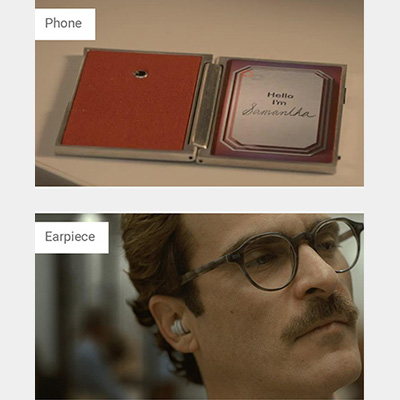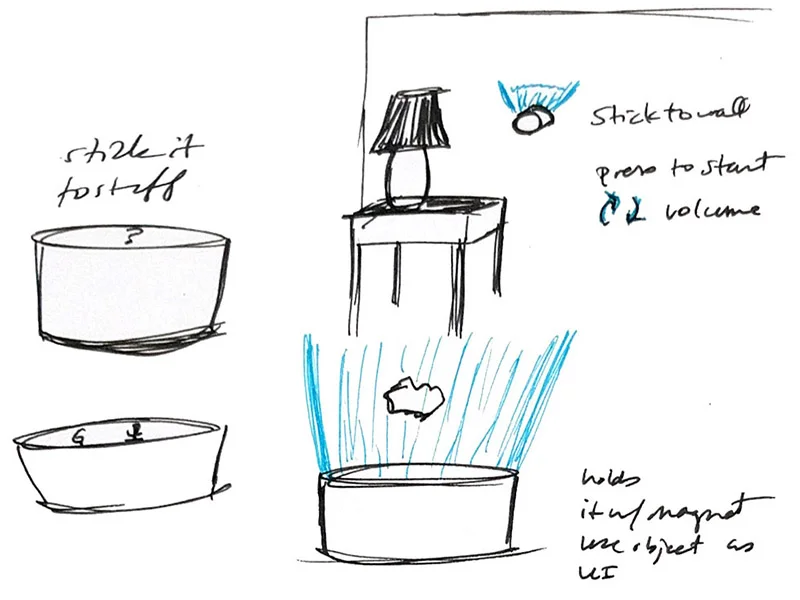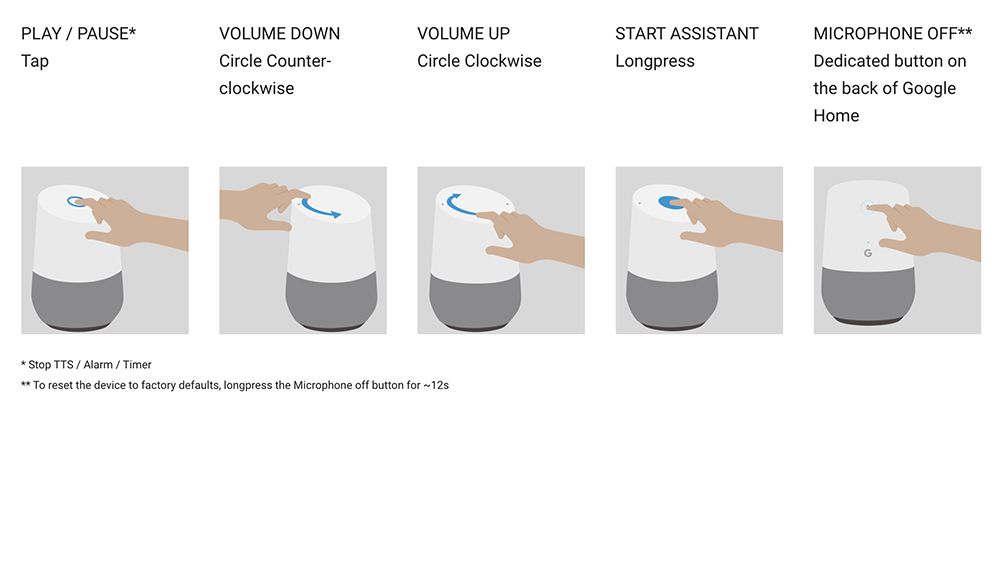Overview
Product & PROJECT summary
Google Home is a voice-activated speaker using the Google Assistant, offering music, answers, task management, and smart home control.
While entering the market later than competitors, Google Home quickly closed the gap in units sold and functionality. Specifically, Google Home was celebrated for its design as a differentiator.
I was the day-to-day UX lead for Google Home responsible for the overall user experience from the out-of-box experience (OOBE) through continued usage.
Note: Detailed designs and specs are not shown here to protect proprietary information. These artifacts can be shared upon request.
“Google Home looks less like a gadget and more like a piece of modern art.”
Role: UX lead
Led end-to-end user experience design for all aspects of Google Home from initial concept through launch, including:
Hardware interaction design
Companion app design
UX research (UXR) planning, prep, and support
Resourcing, coordinating, and tracking design work across all UX designers, researchers, writers, and voice user-interface (VUI) designers in collaboration with the UX Director and UXR Manager
Processes to support UX, QA, and launch readiness evaluation, e.g., bug bashes, planning, prioritization, delegation of UX work tasks, and marketing support
Regular stakeholder communication and alignment across functions and product areas
Team: me and 2 industrial designers (primary design team); UX Director, UXR Manager, and a fluctuating team of 10-15 UX designers, researchers, writers, and VUI designers (extended design team)
Project duration: 10½ months (mid-12.2015 - 11.2016)
Immersion
Trendscrape
I started to map out the space by looking at competitor products in the same / similar spaces as well as reviewing product interaction design trends.
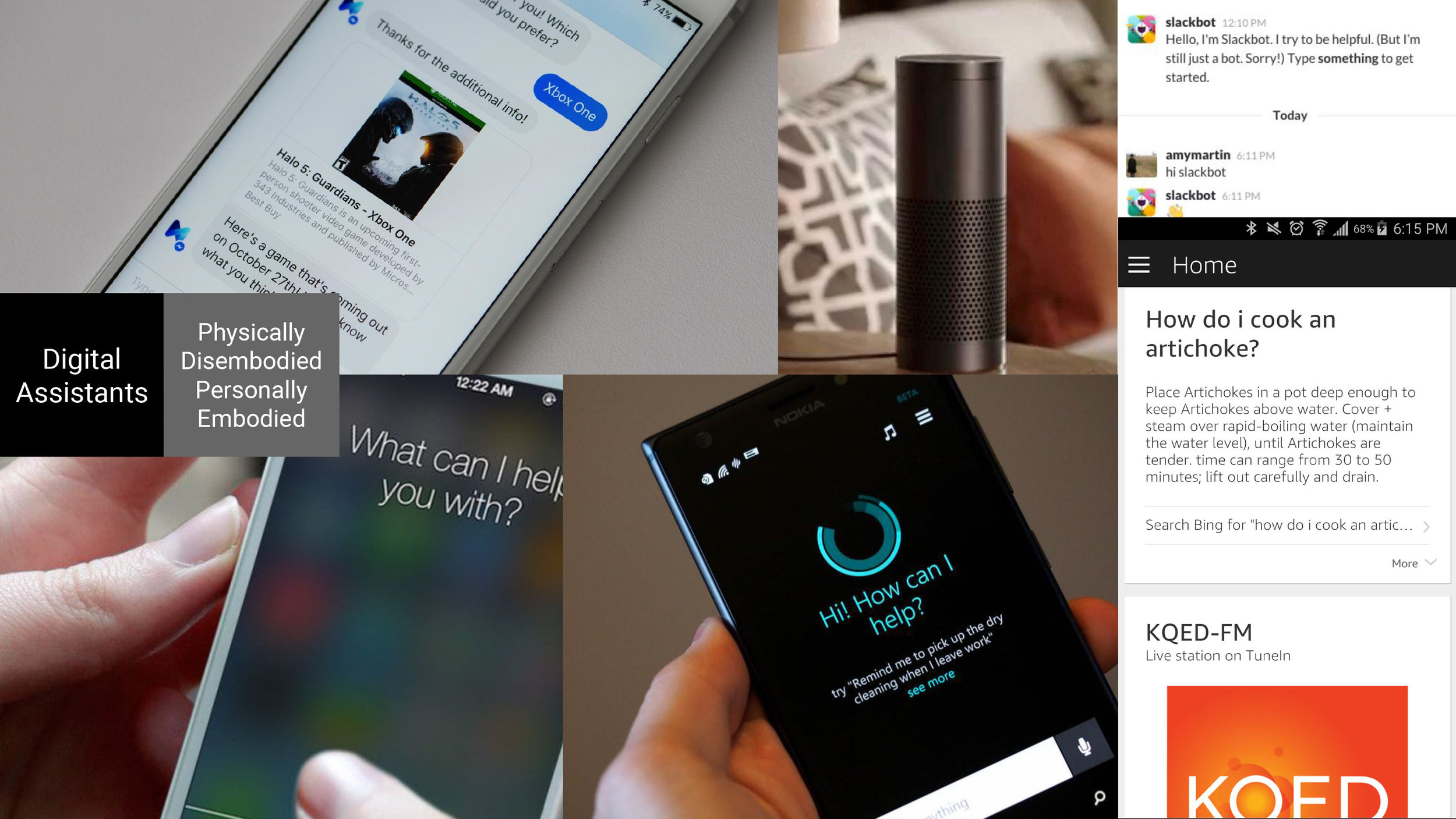
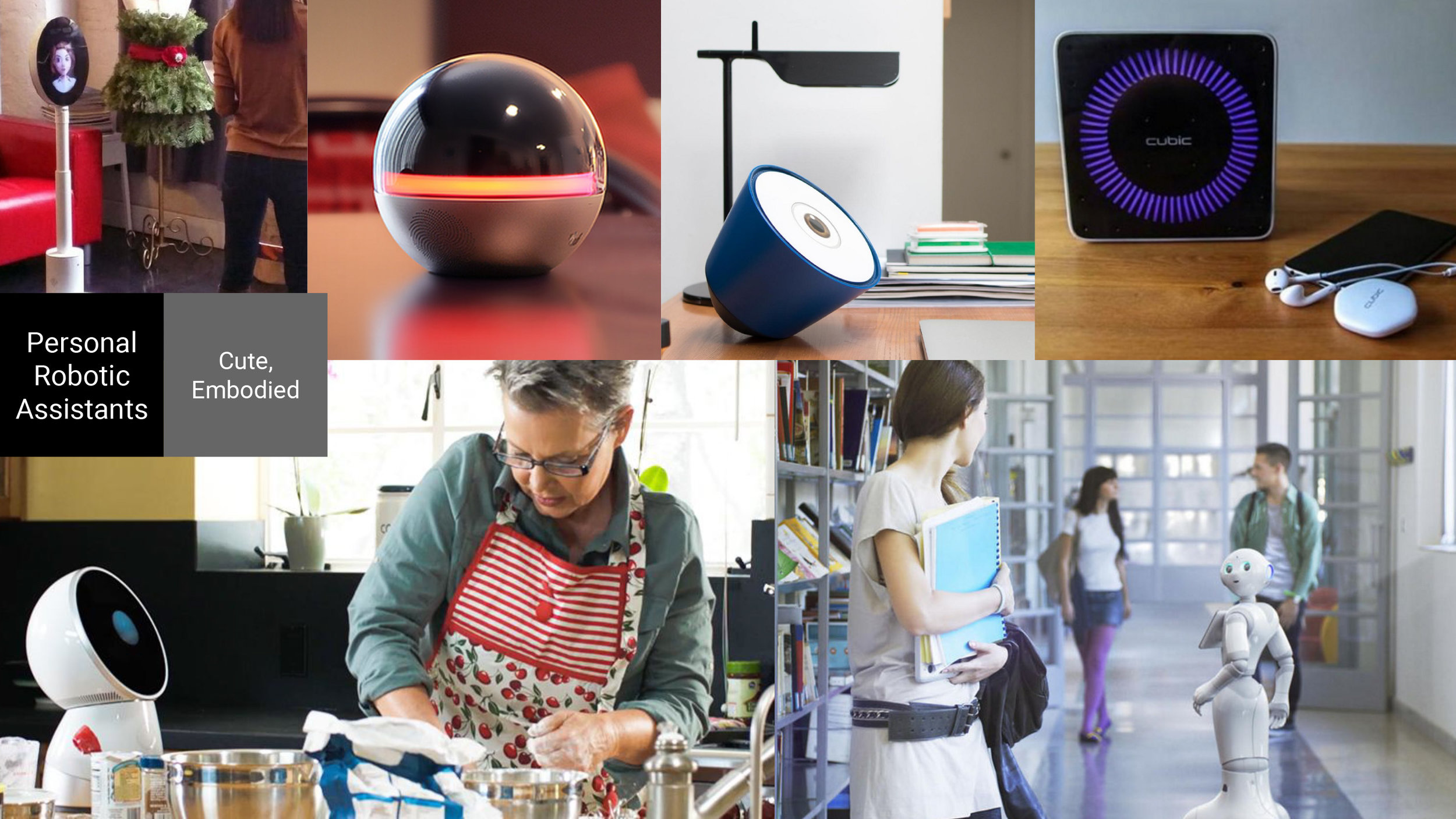
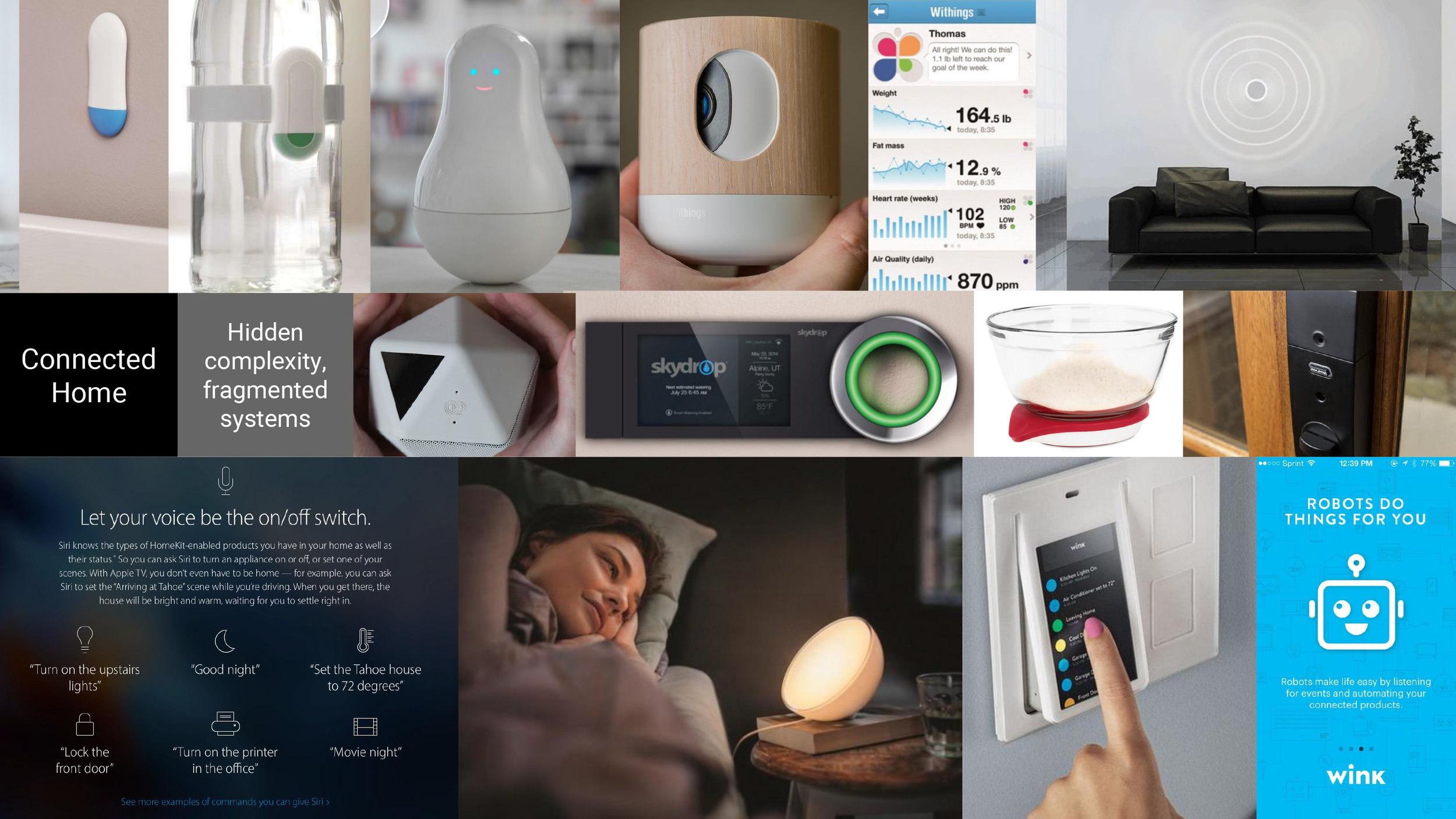
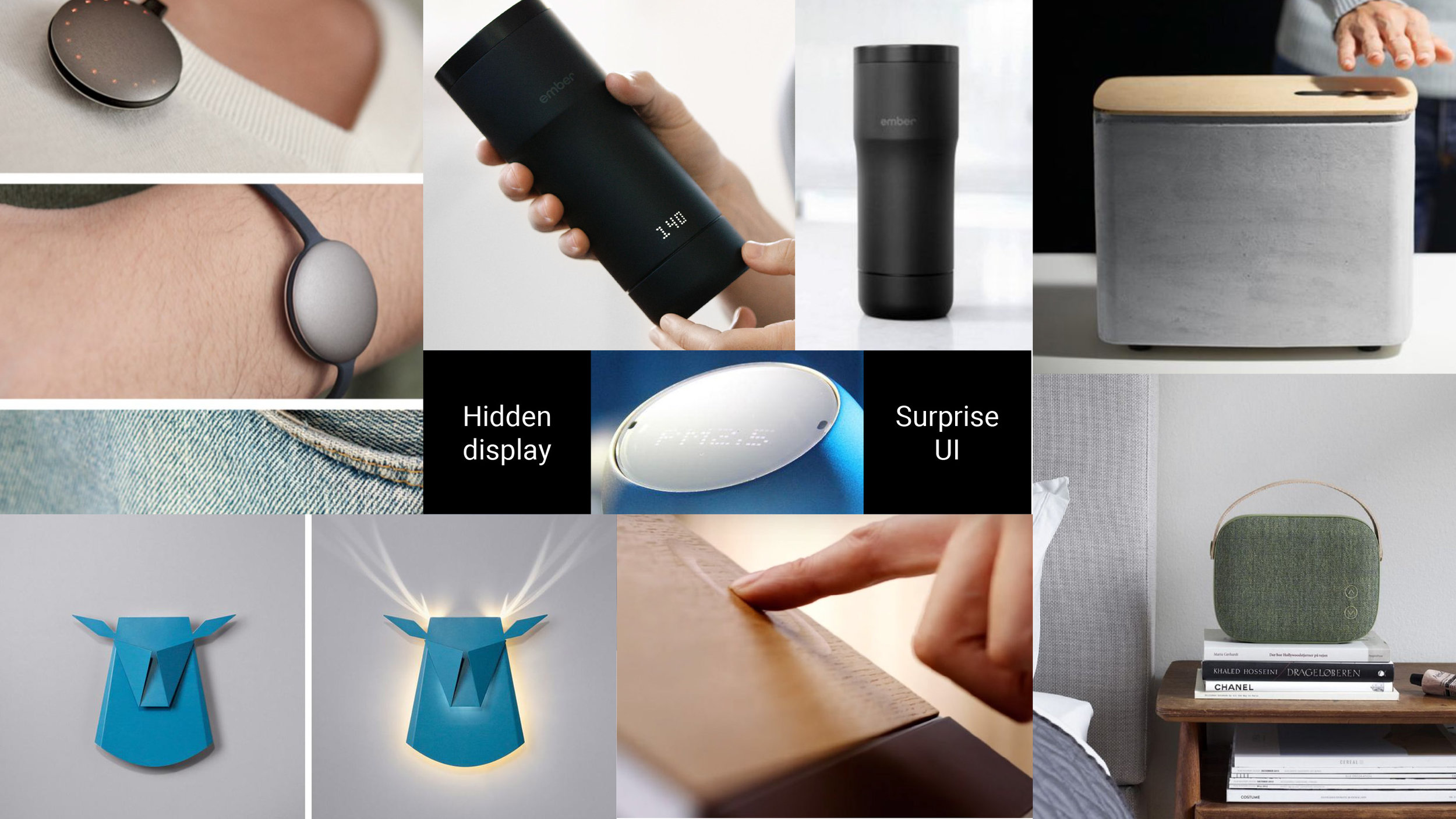


Exploring analogous spaces
In addition to extensive secondary research on voice interface systems academic and commercial, I also investigated analogous spaces in history, fiction, and other industries looking for inspiration, common themes, and anything that would help inform our design for Google Home.
…in history
Using the first telephones
“...the telephone is the instrument you hold against your ear; no, not your head, your ear; yes, hold it tight and listen.”
– Angus Hibbard, Wisconsin Telephone News, September 1936
…in fiction
Voice user interfaces in movies and media
Her (2013) - Love story between a human and an artificial intelligence, “Samantha.” The user interface illustrates the promise of ubiquitous computing – commonplace technology that fades into the background.
…in other fields
Inspiration from other industries
Some we checked were: ambient computing, biology / biomimetics, data visualization, emerging UI, everyday objects, gaming, medical tech, quantified self, robotics, and tangible interfaces.
Design
Starting from nothing, I worked with the industrial designers, engineers, and product managers to create the form and function of the product interaction design. I also visualized scenarios, eventually creating photoshop mockups for use in internal communications and as the background for vision videos that I also produced. After our direction was set, I was responsible for the designs of all the hardware interactions, working with a sound designer for the earcons. I also set the initial scope, choreography, and flows for the companion app experience before delegating the detailed design work to other designers.
In parallel with the design work, I partnered with our UX research team to drive dozens of usability studies, evaluations, and our dogfood program. This allowed us to get feedback on designs, test hypotheses, and help establish baseline targets to help determine launch readiness.
Example ideation
Example use cases & scenarios
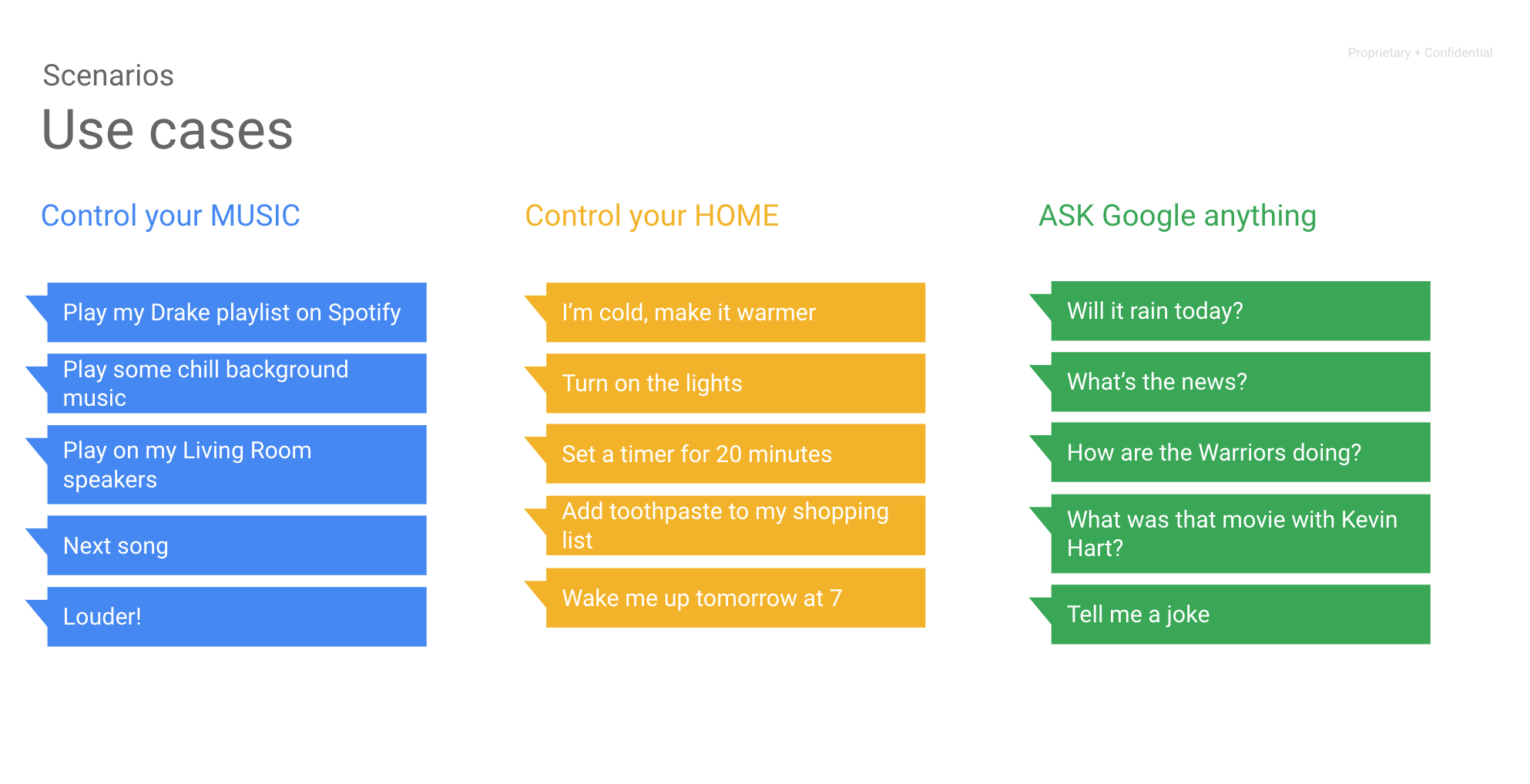
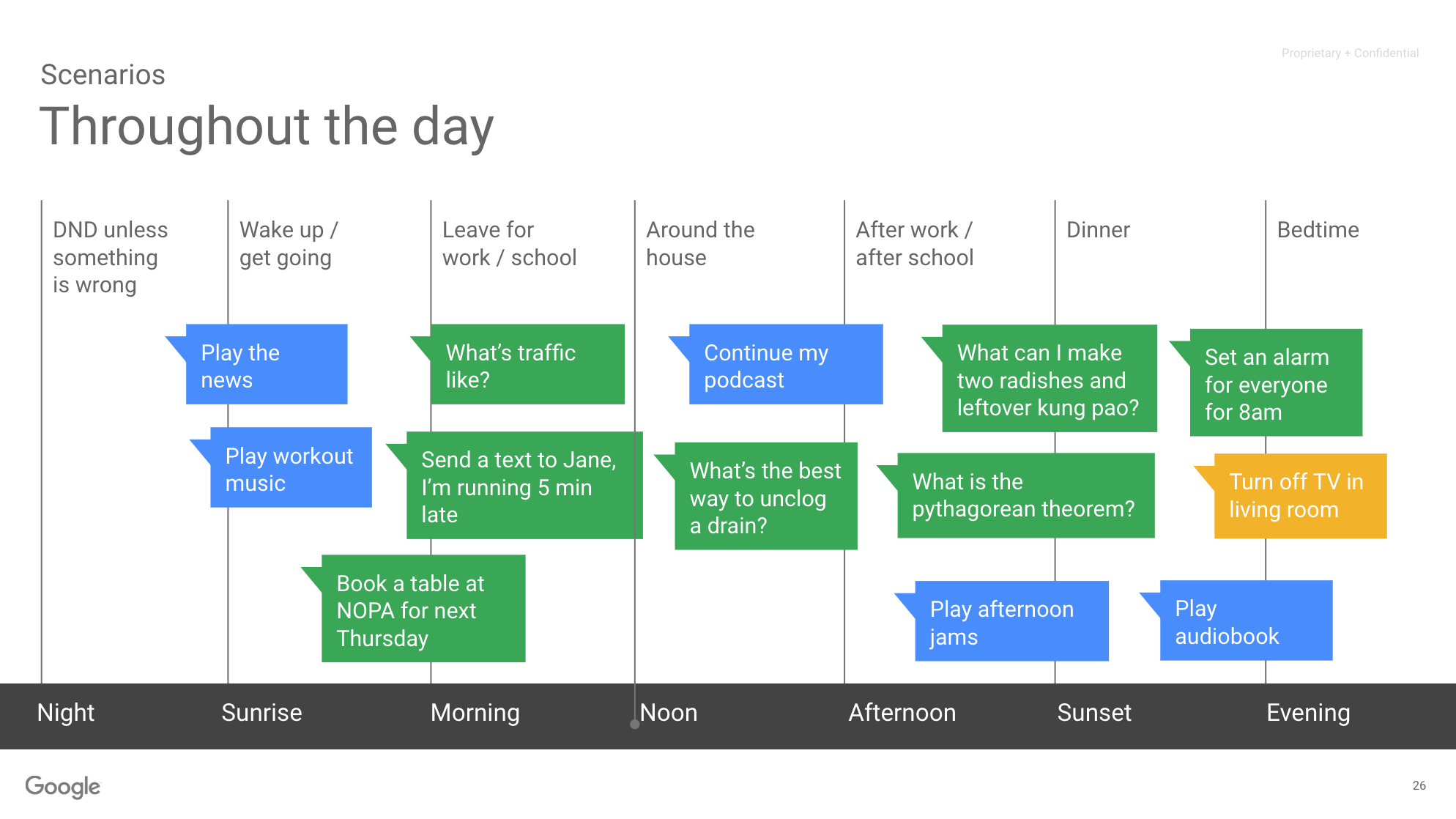
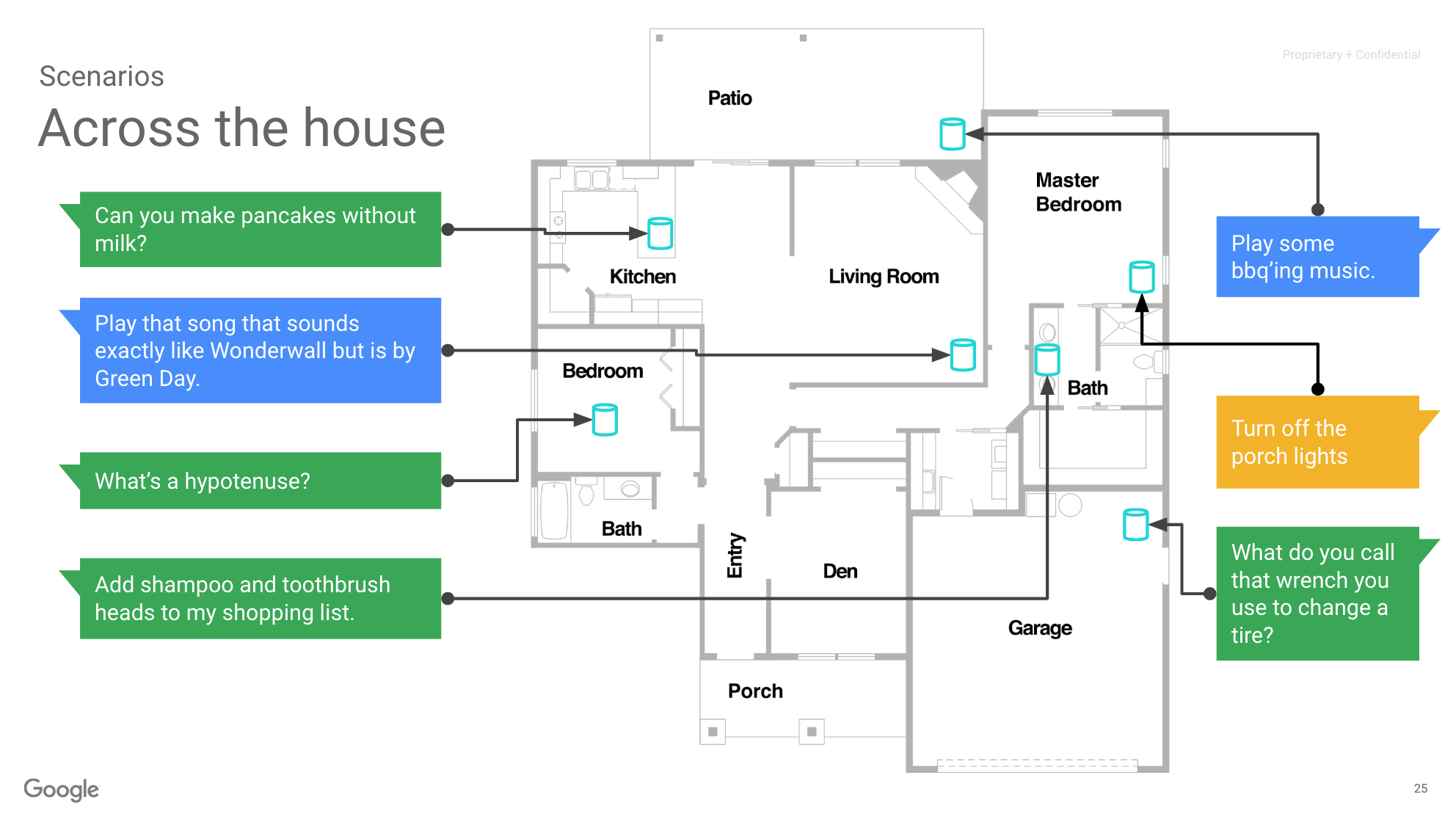
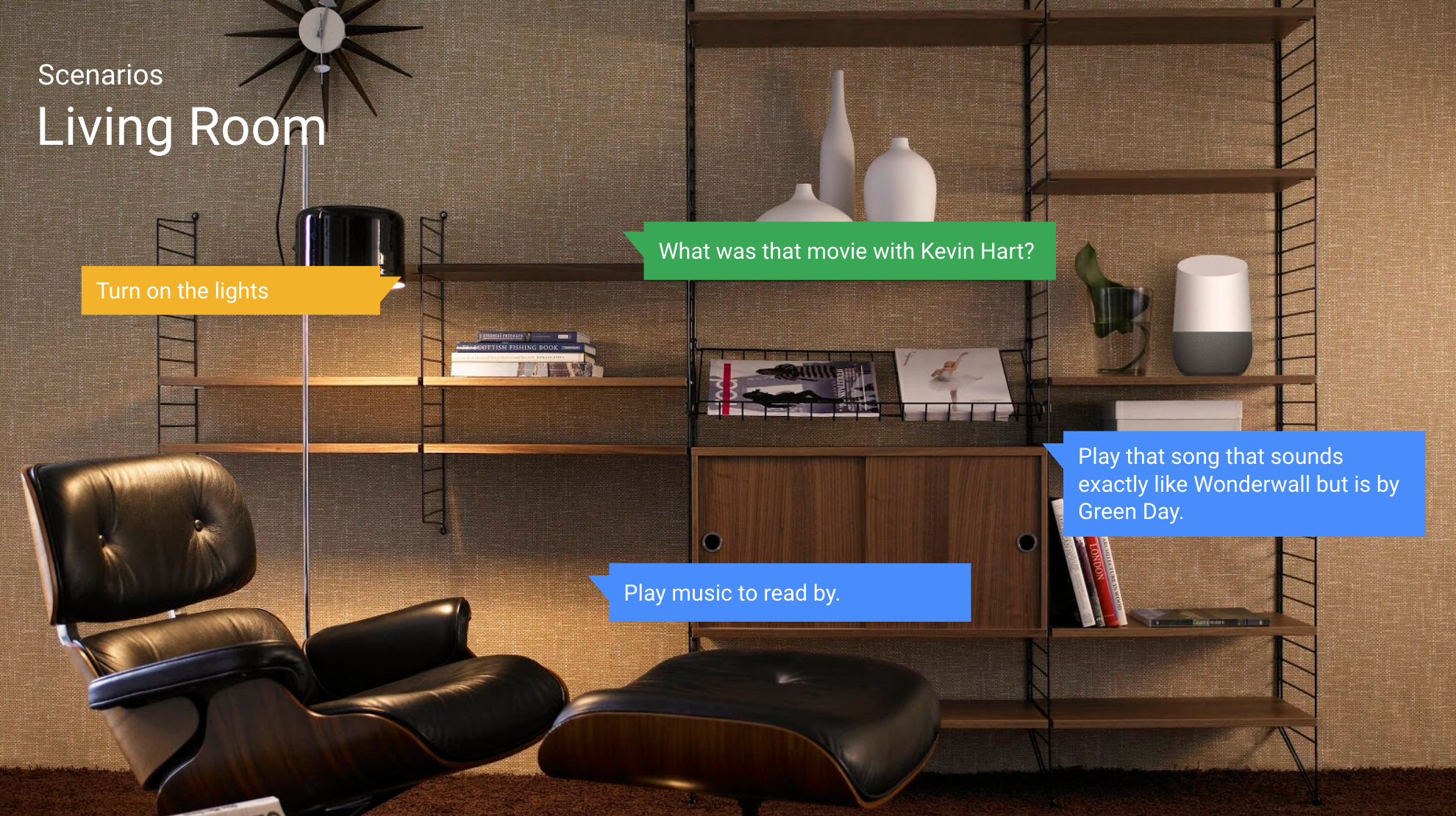
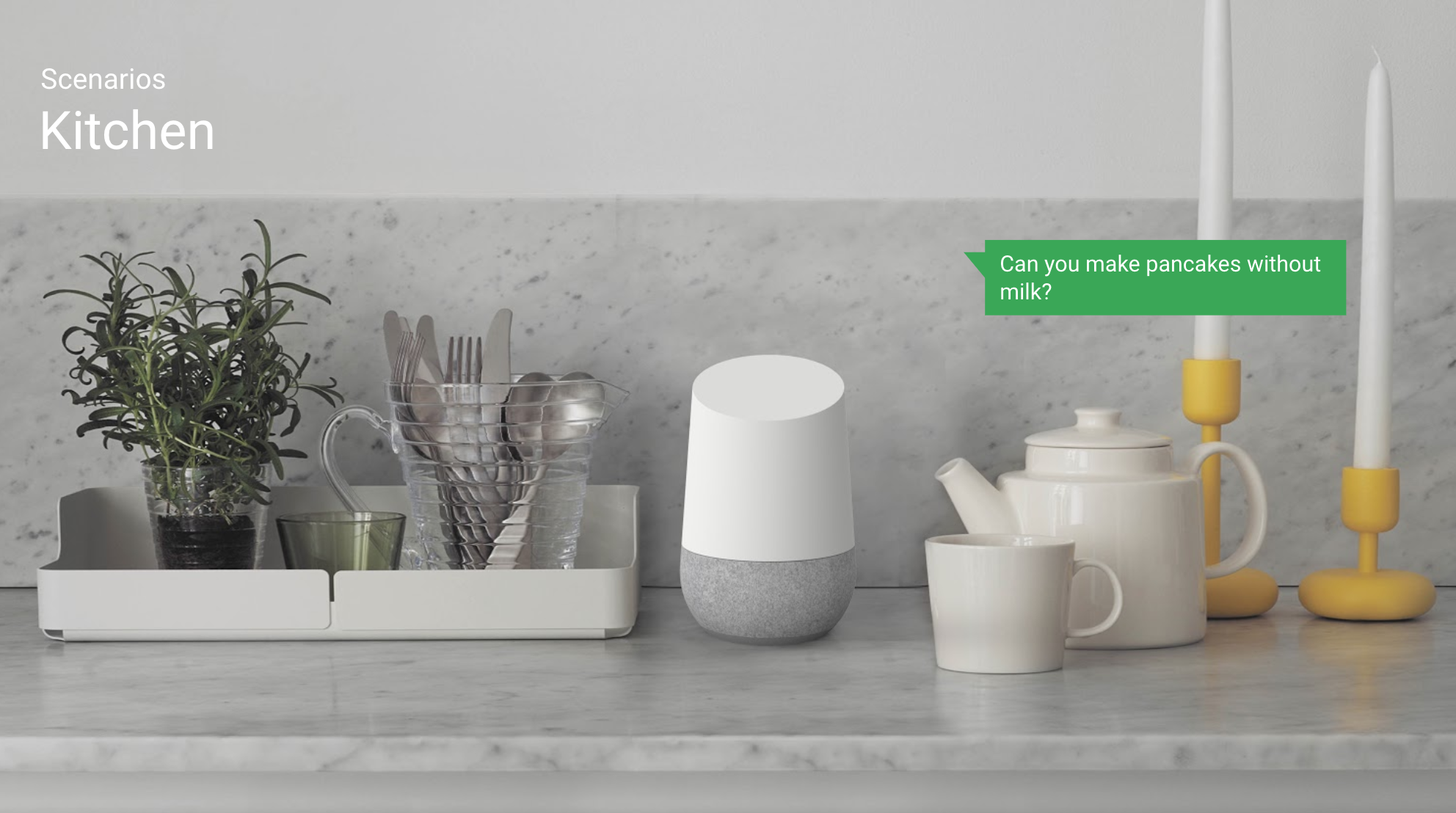
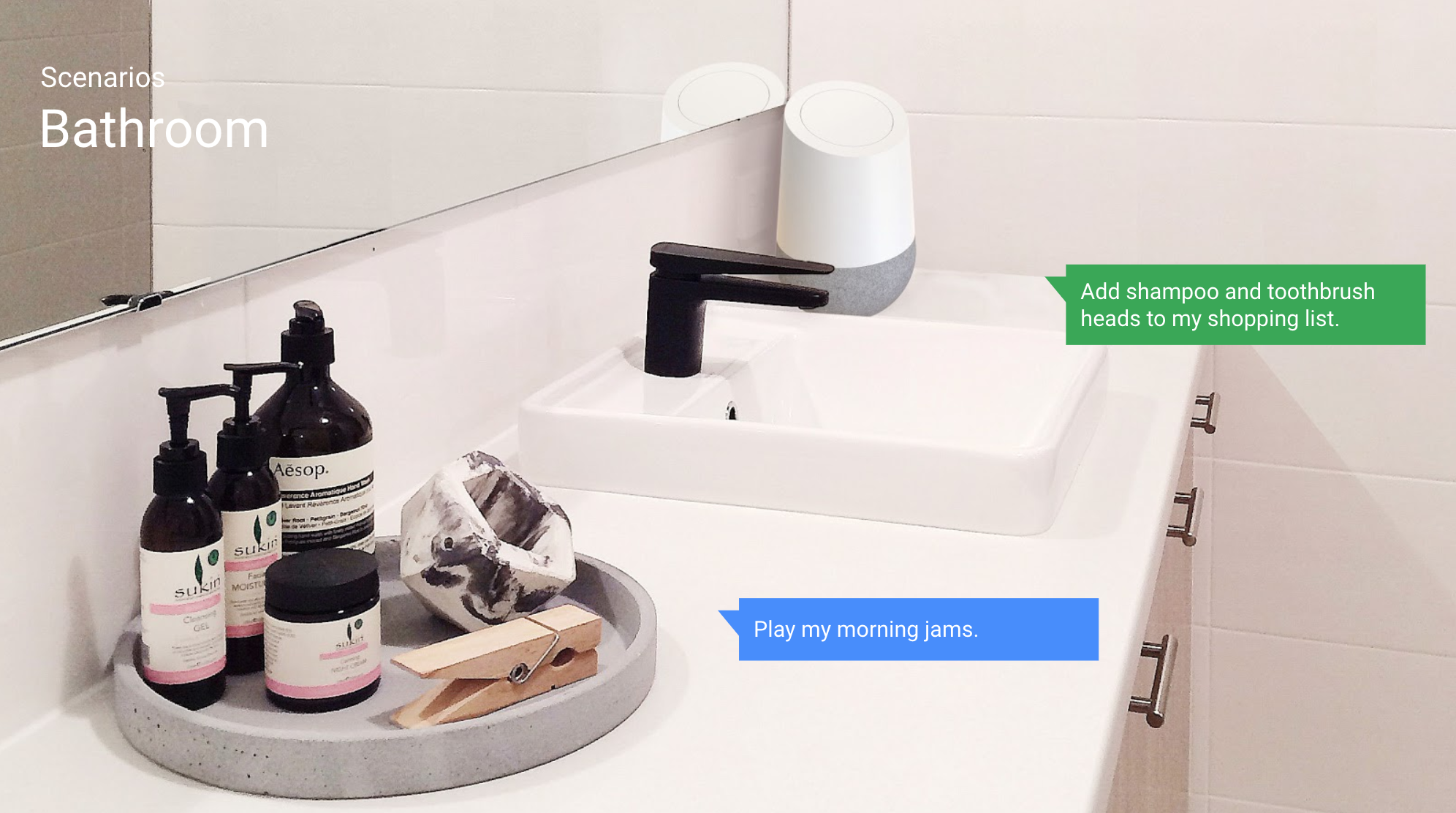
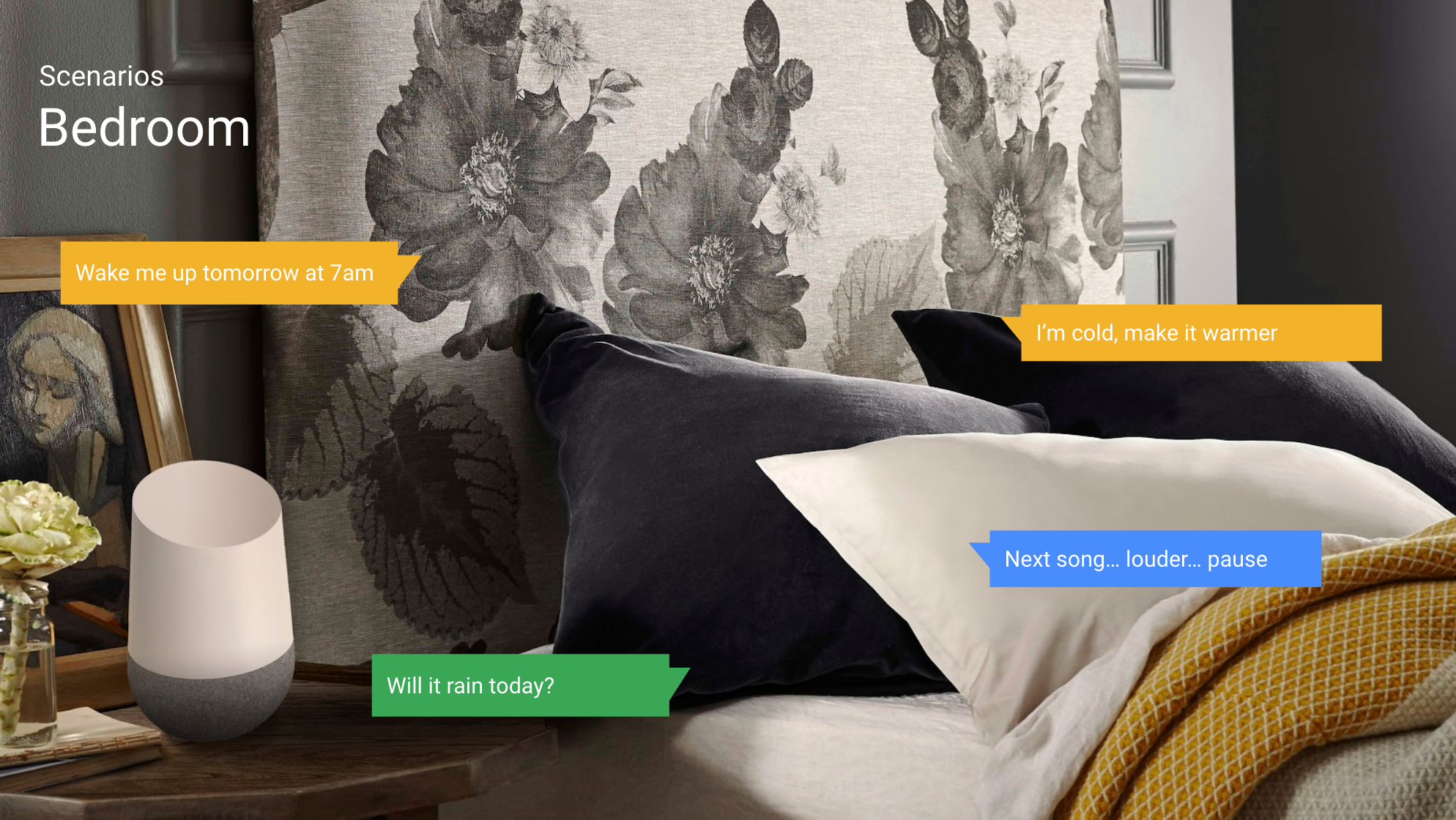
Example artifacts & documentation
Development & Launch
We do not work in a waterfall method. Instead we stagger design and development in iterative cycles to allow us to incorporate data from usability studies, stakeholder feedback, technical constraints, and edge cases into our design process. What this looks like in practice is a lot of process, trackers, bug bashes, documentation, and marketing support.
Marketing product intro video. This video is an example of the advertising and announcement content I reviewed with marketing and vendors to ensure accurate representation of all hardware UX elements across online, broadcast, and print materials. As part of this process I also created a style guide with specific requirements for display depending on the media type that the Marketing team could use to eventually be able to review materials independently.
LAUNCH PRESS
A successful launch of our first voice-activated speaker quickly minimizing any first-to-market advantage of our competitors. Here’s some press from our release day in 2016.
USA Today: Get ready Alexa: Google Home will cost $129 and taps Google search, maps
CNET: Alexa who? Google Home wants to kick Echo off of your countertop
Wall Street Journal: Google Details New ‘Pixel’ Smartphones, Amazon Echo-Fighter Called ‘Home’
TechCrunch: Google Home will go on sale today for $129, shipping November 4
Business Insider: Google unveils its newest major product: the Google Home speaker
Bloomberg TV:Google’s New Product Portfolio
Awards
Red Dot Award - Best of the Best - 2018
IDSA / IDEA Gold - Consumer Technology - 2017
Innovation by Design Honorable Mention - General Excellence - 2017
Innovation by Design Finalist - Product - 2017
Spark Awards - Gold - 2017
Good Design Award - 2017
PATENTS
Voice interface device (issued 2018)
LED Design Language for Visual Affordance of Voice User Interfaces (patent pending)
Planar Electrical Connector for an Electronic Device (patent pending)
Voice-Activated Electronic Device Assembly with Separable Base (patent pending)


